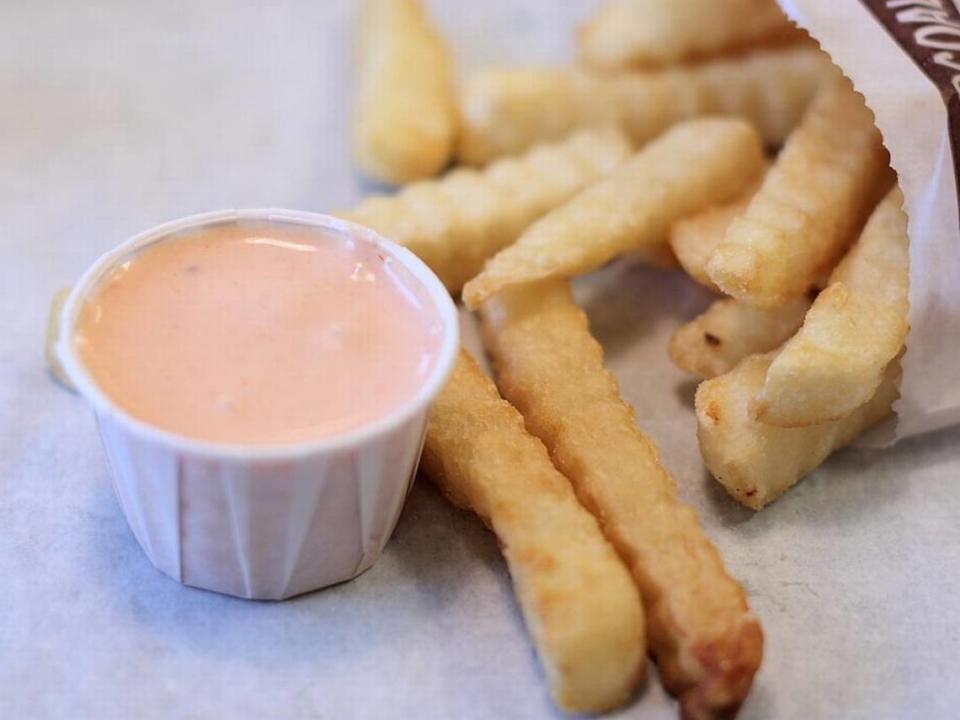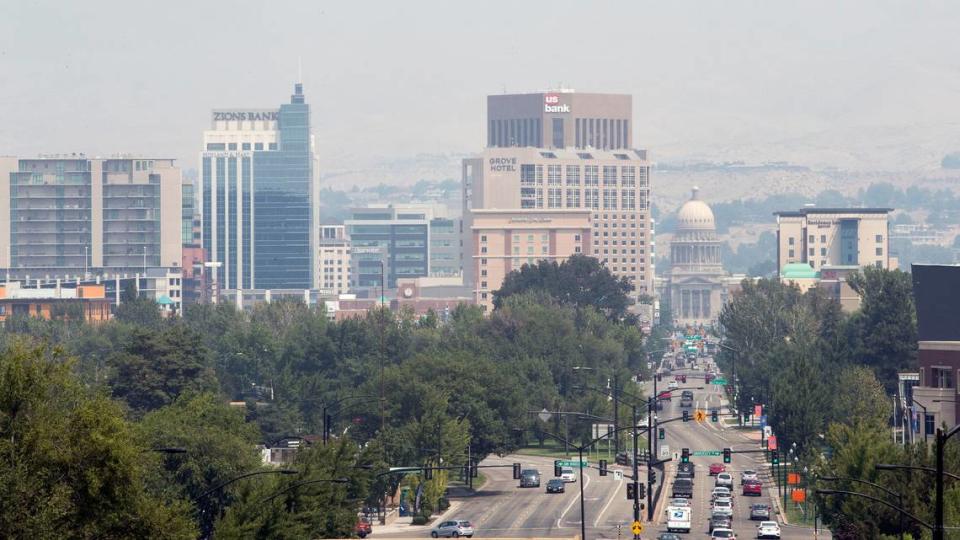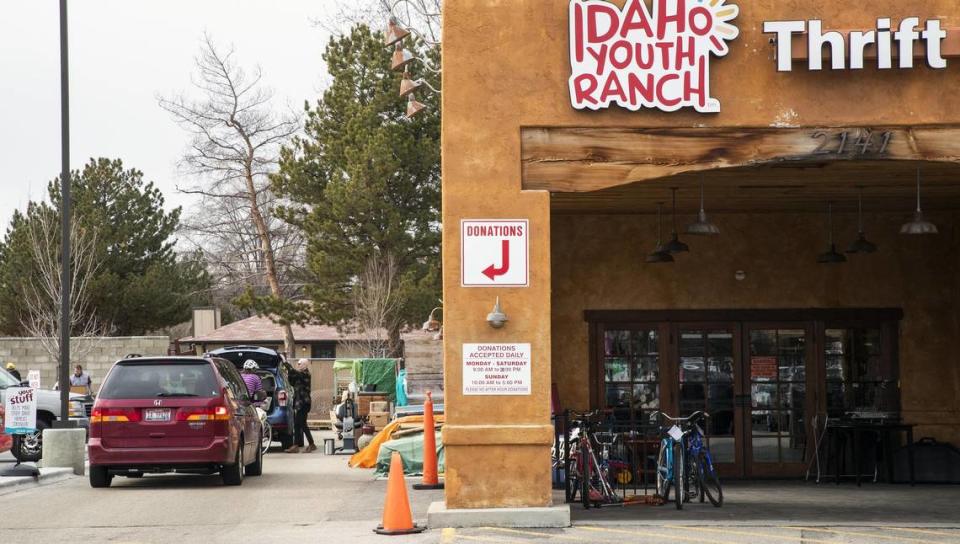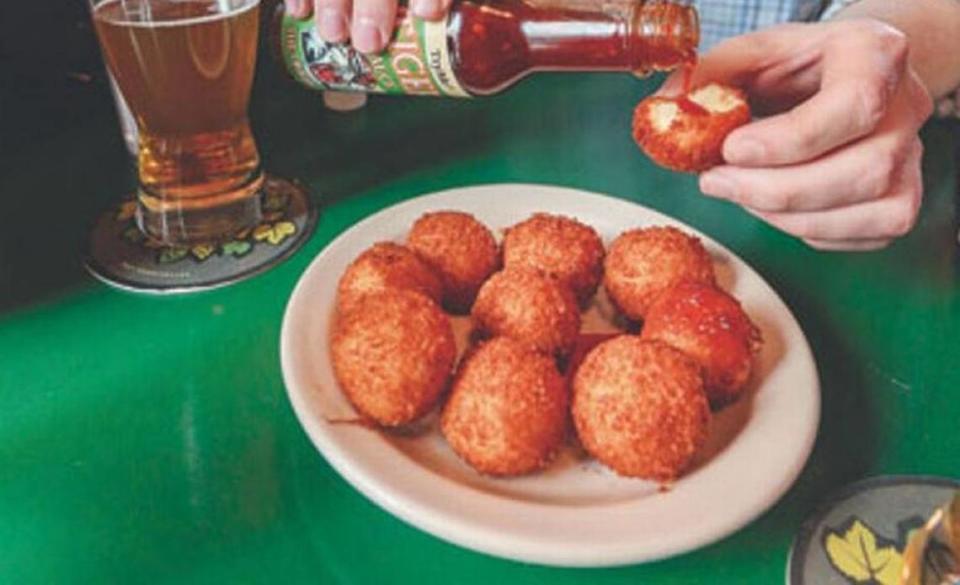10 things to know if you’re new to Boise, from potato jokes to fry sauce
Explore Boise: Sign up here for our newsletter on what to eat, drink, see and do.
The population in Boise has grown considerably over the past few years. According to census estimates, Ada County grew by 4.8% from 2020 to 2022, gaining nearly 24,000 people — almost a quarter of the new residents.
If you’re one of them, you already know Boise is full of welcoming, kind people. There’s hiking, fishing, skiing and camping within minutes of home. We have Treefort, a music and everything-else festival. We have theater, music, fine dining, comedy clubs and unique gathering places like JUMP.
Here’s a guide to some of Boise’s lesser-known features and quirks.
Did we miss anything? Let us know at newsroom@idahostatesman.com or (208) 377-6400.
1. Please don’t make potato jokes.
We’ve heard them all. We’ll probably smile and chuckle at your tater joke, but we’ll be groaning on the inside.
2. Speaking of potatoes, though …
You’re going to have to pick a side. Do you prefer ketchup with your fries? Ranch? Fry sauce?
If you’re in Boise for long, you’ll become acquainted with the latter — one of our favorite condiments.

The tangy, peach-colored sauce isn’t native to Idaho. The Utah-based Arctic Circle claims credit for inventing the popular regional recipe. (You can find several Arctic Circle locations in the Boise area.)
Still, you’d be hard-pressed to find a fast-food burger joint in the Treasure Valley that doesn’t have some version of fry sauce ready to accompany your order of fries.
3. Navigating the Boise Airport
When it’s time to travel, Boiseans have quick access to the airport that is conveniently located within city limits and close to downtown. You can get there by taking I-84, and by driving straight up the Vista Avenue corridor. The airport offers taxi and ride-share pick-up and drop-off locations, so you can avoid the overnight parking fees.
With the current multiyear expansion of the parking and car rental areas, and future concourse construction set to begin in the next few years, make sure to arrive early before your flight. As Boise’s population grows, it does take longer to find a parking spot and get through security, especially on busy travel days. The parking garage construction is expected to be completed in summer 2023.
Pro tip: On-site parking is very limited, so use the off-site, economy shuttle lot that costs $10 a day.
When you do arrive early, you’ll find free WiFi throughout the building, beautiful public art, a local-artist-focused gallery to peruse, and local-branded restaurants, including Bardenay and 13th Street Pub & Grill, to give you a taste of the city. There even is a Boise Public Library kiosk on the main concourse that offers free digital book downloads.
The Boise Airport’s anchor airlines such as Alaska, Delta, United, American, Southwest and others offer direct flights to Seattle, Chicago (O’Hare), Atlanta, San Francisco, all Los Angeles-area airports, and Minneapolis, to mention a few. It also has expanded its service to popular getaway destinations, such as Las Vegas and San Diego.
4. The weather is great. Mostly.
Boise is mostly immune to hurricanes, tornadoes and other natural disasters. And it’s sunny more than half the time, ranking in the top 50 sunniest cities, according to NerdWallet.com.
That doesn’t mean it’s perfect weather.
It makes sense that the National Interagency Fire Center is located in Boise, because Idaho is basically the wildfire capital of the continental U.S.
Between 1992 and 2012, an average of 568,000 acres of Idaho burned annually, according to a Statesman analysis of federal wildfire data. Only Alaska had more acres burn.

When Western fires rage, the Treasure Valley is inundated with wildfire smoke for weeks. Walk outside and it smells like a campfire. Go for a trail run, your lungs won’t be happy. It’s rare to have a mild summer like 2019, where fires are light and the air is clear.
Then comes the dreaded inversion.
“From late fall to mid-winter, the Treasure Valley is often socked in by a foggy-smoggy mix of air that prevents us from seeing the big ball of fire in the sky,” the Statesman reported in 2017. “That nasty air is a byproduct of inversion conditions, which is when cold air gets trapped on the Valley floor below warmer air.”
Inversions can happen any time of year, but Boise sees them most in the fall and winter.
5. Boise is a ‘Welcoming City’
Boise is a major refugee resettlement center. So is Twin Falls, a couple of hours southeast of Boise.
Boise received a “Welcoming City” designation from Welcoming America — a nonprofit that supports “inclusive communities” — earlier this year.
“This designation reflects our longstanding work to help immigrants and refugees to become true members of our community and welcomed neighbors,” then-Boise Mayor David Bieter said, according to KIVI-TV, Channel 6. “Boise has been a place of refuge and opportunity for refugees and immigrants since its founding, and there is no question we are richer as a community as a result. We will continue to strive to remain a leader on this issue and keep Boise a welcoming city for all.”
Thousands of people have come to Boise from Africa, the Middle East and other regions where conflicts have forced men, women and children to flee their homes.
Refugees are a big part of our region’s workforce. They are local farmers, child-care providers and physicians.
6. Thrift stores galore
We have national and regional thrift-store mainstays, like Goodwill and Savers. We have indie thrift stores tucked into strip malls around the valley. We have consignment stores galore.
The biggest, though, is Idaho’s homegrown secondhand chain, the Idaho Youth Ranch. The Youth Ranch is a Boise-based nonprofit with more than 20 thrift stores across the state.

Longtime Idahoans know the Youth Ranch for its legacy of helping at-risk kids and their families. The Idaho Legislature considers the Youth Ranch’s mission important enough for a special tax credit, which gives donors an extra tax break on top of regular deductions for charitable giving.
7. That cyclist just rode through a red light! What the $@#@!
Yep, he did. It was totally legal.
That’s because of a cyclist-friendly law here, dubbed “the Idaho stop.”
Cyclists must stop at a red light and yield to traffic, but they can ride on through once it’s safe to proceed.
And at stop signs, they don’t even have to stop.
“Idaho is the only state in the nation where a bicycle can pull up to a stop sign but proceed through without stopping,” Boise Police officer Andy Johnson told the Idaho Statesman in 2017. (At least one other state has passed a similar law since then.) “But they have to yield. And yield means they have to slow down, and they can proceed through with safety. They have to yield the right of way to anybody at the intersection already there lawfully that’s stopped or close enough to the intersection as to constitute a hazard.”
8. There’s free parking.
The meters in Downtown Boise give you a free 20 minutes of parking. Just hit the button or plus sign on the meter — before you pay.
Your first hour of parking is free in many of the garages downtown, too. Check parkboi.com for a map.
Extra tip for newcomers: When locals complain about parking or traffic in general, just nod. Boise may seem like a driver’s paradise if you moved here from a bigger city. But locals were spoiled for years with ample parking and almost no traffic.
9. Eat some croquettes (croquetas).
That’s cro-KET-uhs. A croqueta is like a deep-fried ball of cheesy cream-of-potato soup. You can find them, most famously, on the Basque block at The Basque Market and Bar Gernika.

10. Idaho’s time zones are weird.
The northern Panhandle, and Moscow the town where the University of Idaho sits, are in the Pacific time zone. We’re in the Mountain time zone. And we do observe Daylight Saving Time. Get ready to fall back soon!
A version of this story was originally published in 2019.
Boise's Neighborhood Guides
Over the next several months, the Idaho Statesman will be publishing neighborhood guides. Here are a few:
• Boise Bench Guide: The city's multicultural wonderland
• East Boise Guide: An old — but new — part of downtown
• Garden City Guide: The up-and-coming hot spot
• North End Guide: Boise's hiking and biking neighborhood
• North Meridian Guide: Idaho’s fastest-growing city
• Northwest Boise Guide: Exploring West State Street

